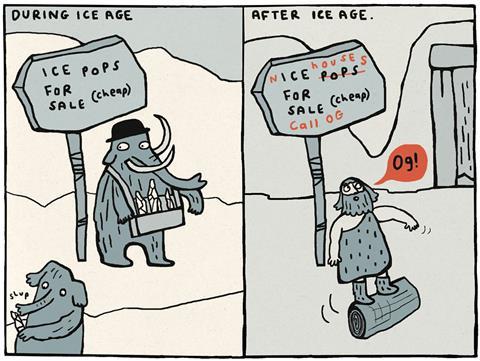Here’s a case where homeowners took a builder to court for damages when cracks appeared in their homes. The question was how to calculate what compensation to pay

This story begins 20,000 years ago. Shepherd Homes Plc built 94 new houses at Eden Park, Hartlepool. They are “executive homes”, lovely on the face of things. Look at them on Google Street Map. Seventy-one of the homeowners had to sue Shepherd because the piling contractor seemingly got caught out. Just as the ice age was closing, that confounded melting ice exposed the glacial till. We all know of course that glacial till at Eden Park comprises boulder-clay with sands and gravels beneath. As the ice sheet retreated, the melting water flowed over the boulder clay forming ponds and channels. All of that caught out Shepherd’s design build piling contractor Encia Remediation. Shepherd sued Encia for damages and an indemnity. Encia admitted in the trial it was in breach of its duty of skill and care in respect of the 94 houses. Damages flowed to Shepherd Homes. That was in 2007. Now it was the homeowners’ turn to sue. They were in contract with Shepherd as buyer and seller. The five-week trial on a sample 10 homes was last year. Shepherd has to pay out to the homeowners damages for the “diminution in value” the houses suffered as a result of the defective piling. But Shepherd didn’t accept the way the judge calculated the damages. So they went to the three-man Court of Appeal. They got nowhere. But this territory of what compensation is payable is important to housebuilders and homeowners alike.
I will come back to the Eden Park disaster in a moment. I pause to point to another case now on-going. It’s a good example of what claim a builder might face when a housebuilding project gets into difficulty. The neighbour’s oil tank had a tantrum. The oil poured out and contaminated next door’s land. Shortly before, the house on the next-door plot was put on the market for £402,500. It was on the verge of completing the sale, when the oil spill happened. The sale collapsed. The claim, neighbour to neighbour, is on the basis that the loss is £402,500, so pay that. However, the claimant says that if paid that cash he will undertake to transfer the contaminated property to the defendant. Novel? Yes, says the senior barrister but correct in the circumstances; well, we will see.
Back to Hartlepool, the rule for compensation caused by a breach of contract is to place the victim, as far as money can do, in a position he would be in if the breach of contract had not occurred. A row frequently breaks out at this point. Is the compensation the “cost of the cure” or is it the reduced value of the house with this defect, we call this “diminution of value”.
The judge had an eye not just for the cost of repair but also whether a potential purchaser would or would not get a mortgage
Now then, all of these executive homes were wrongly piled. Is the compensation payable the cost of re-piling? No, says the builder. If all that cash was paid to the homeowner, that homeowner would pocket the money and sell his blighted house at a discount to a knowing purchaser who is likely to live with the defects. There is a grain of truth in that argument. Some of the houses had minor hairline cracks here and there. True, these cracks are caused by the wrong piling design. True, the remedy is re-piling. But re-piling for minor cracks goes too far. So, the fairer compensation is for the cost of the minor repairs perhaps two or three times in 20 years, which, said the judge, he would characterise as cost of cure.
The judge via his sample of 10 homes considered the extent of damage to each for the purposes of compensation. He had an eye not just for the cost of repair but also whether a potential purchaser would or would not get a mortgage. Two out of the 10 homes were so bad as to be un-mortgageable. Two were probably mortgageable. The remaining six might or might not be mortgageable - to varying degrees. Remember, these 10 homes were only a proportion of those where cracks have shown up. The judge was designing a system to fathom how much less the house is worth given the defects and the impact on a future selling price. So, the price on the market, whenever it comes to the market, is notionally discounted and that is the damages payable. I took another look at Google Street Map for Eden Park and decided not to buy one at all - ever. An Englishman’s home is not only his castle. It is his biggest investment.

Tony Bingham is a barrister and arbitrator at 3 Paper Buildings, Temple



























No comments yet